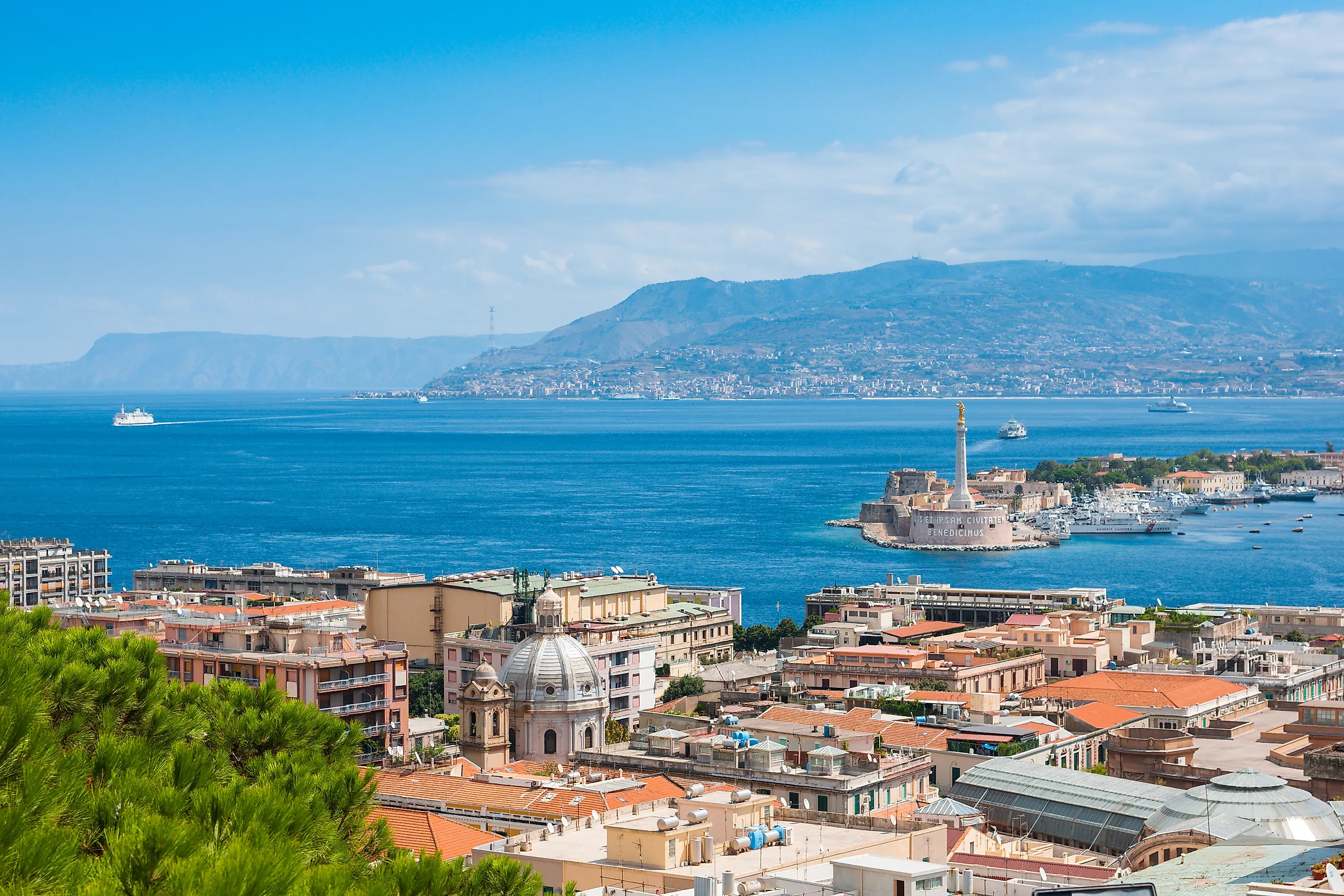
Strait Of Messina
A strait is a narrow water body separating two landmasses that acts as a link between two larger water bodies, such as oceans or seas. It is formed by the fracturing of an isthmus (narrow land connecting two water bodies) due to a tectonic shift. However, if the isthmus is fractured through human activity, the resulting waterway is a canal. A strait can also form when a water body overflows over land that has subsided or been eroded.
Although most straits, such as the Bering Strait, separate continents, others separate countries, and still others separate both countries and continents. The Strait of Messina is an example of a strait that runs through a country. It runs between two Italian regions: Sicily and Calabria.
Where Is The Strait Of Messina?
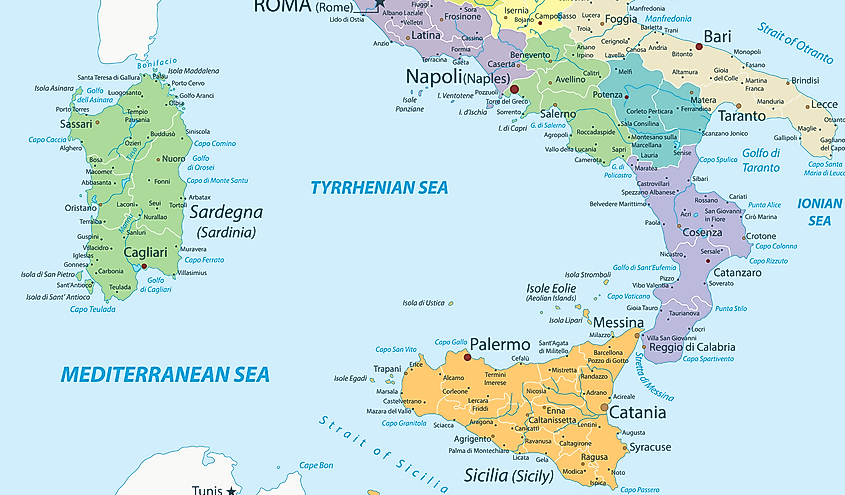
The Strait of Messina is a narrow strip of water separating mainland Italy and the island of Sicily. It connects the Ionian Sea and the Tyrrhenian Sea to the south and north, respectively. These two seas are within the Central Mediterranean Sea. The Ionian Sea is bounded to the west by Southern Italy, while the Tyrrhenian Sea is on Italy’s western coast. The closest points on either side of the strait are Punta Pezzo (Calabria) and Punta del Faro (Sicily).
Geography
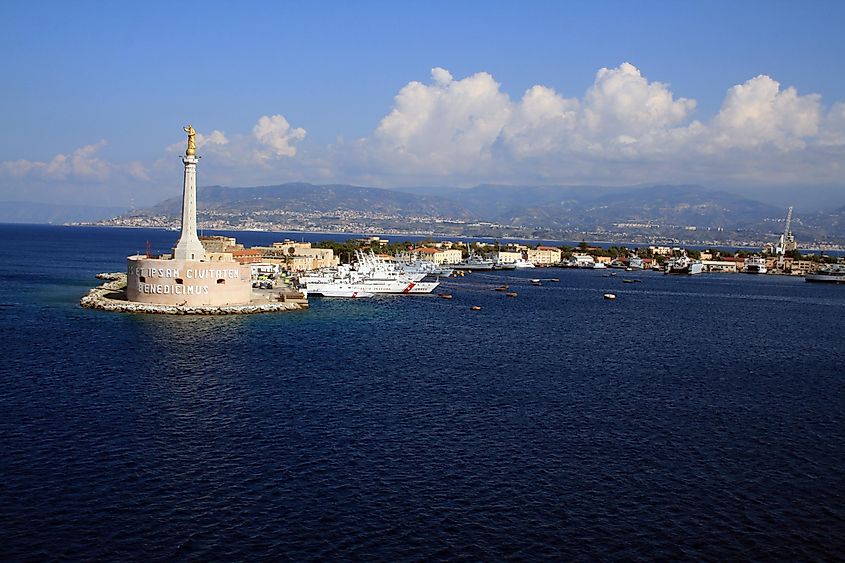
The Strait of Messina is a 32 km-long strait from the Ionian Sea to the Tyrrhenian Sea. It narrows towards the north, from 5.1 km at the town of Messina to its narrowest point, 3.1 km, located between Villa San Giovanni and Torre Faro. The strait is generally narrow and shallow, with an average depth of 90 m, and is 250 m deep at the deepest point. Both sides of the strait are characterized by rugged but green vegetation.
As a shallow and narrow water body, the Strait of Messina is treacherous and has caused numerous problems to sailors. The strait’s currents are so strong that they can destroy the seaweed on the ocean floor. The currents create a whirlpool in the narrowest portion, at the northern part. Although the main current runs northward, a smaller current runs from north to south. The currents alternate at an interval of six hours. The whirlpool may have inspired the famous Greek legend of Charybdis and Scylla, two sea monsters responsible for Odysseus and his crew’s misfortune.
Brief History And Population

Postcard printed in Russia showing the aftermath of the 1908 earthquakes in Messina, Italy. Image credit: IgorGolovniov/Shutterstock
Two of Italy’s oldest towns are located on either side of the Strait of Messina. Messina (Sicily) and Reggio-Calabria were founded by the Greeks around the 8th century BCE. Foreigners have invaded both cities due to their strategic port location. Strong earthquakes have also hit the area around the strait, including in 1908 when almost the entire Messina City was destroyed.
Sicily is one of Italy’s 20 regions and the country’s largest island. It is home to about 5 million people. Messina, the region’s nearest province, has a population of about 653,000 people, of which about 300,000 live within the Messina City metropolitan area. Calabria Region is home to about 2 million people, with Reggio-Calabria hosting 186,000 people.
Marine Life
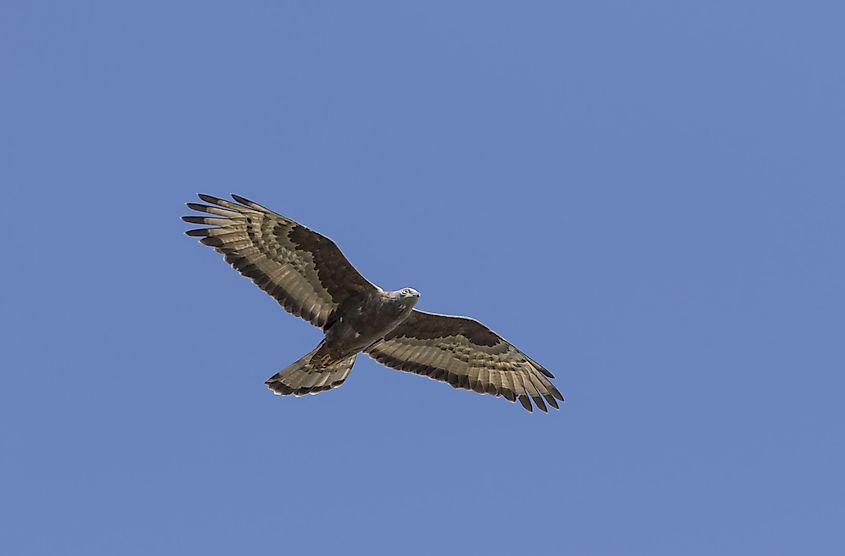
The Strait of Messina has a unique marine ecosystem due to its strong water currents. The alternating and intense current, abundant phosphorous and nitrogen, and low water temperature support abundant and diverse species. The strait has plenty of deep-sea fish species, including Sloane’s viperfish. The strait is also a migratory route used by fish and other species to access the Mediterranean Sea. Every year, several bird species pass through the strait to their breeding grounds in Europe. Over 300 bird species pass through the strait, including raptors, Egyptian vultures, and European honey buzzards.
Transportation
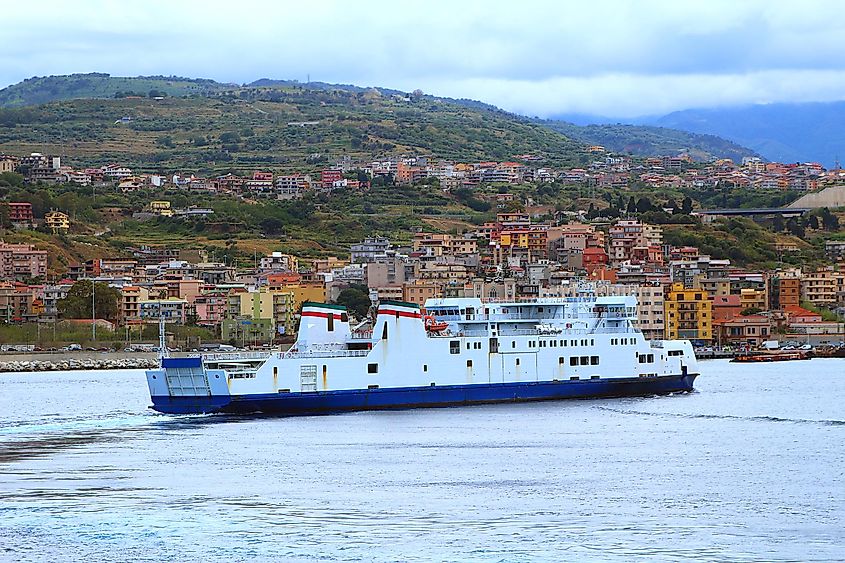
Messina is connected to mainland Italy at Villa San Giovani by a ferry service. On average, the journey between the two towns in Sicily and Calabria takes about 20 minutes. Currently, only Liberty Lines Fast Ferries operates the ferry services. Besides ferry services, the hydrofoil is also a means of transportation on the strait.
For decades, there has been a discussion on the possibility of building a bridge across the strait, specifically between Villa San Giovanni and Torre Faro. A detailed plan for its construction emerged in the 1990s. In 2006, Prime Minister Romano Rodi canceled the project altogether due to doubts about its viability. In 2009, Prime Minister Silvio Berlusconi announced the revival of the bridge’s construction, but those plans were again thrown into uncertainty and plans were canceled in 2013.











